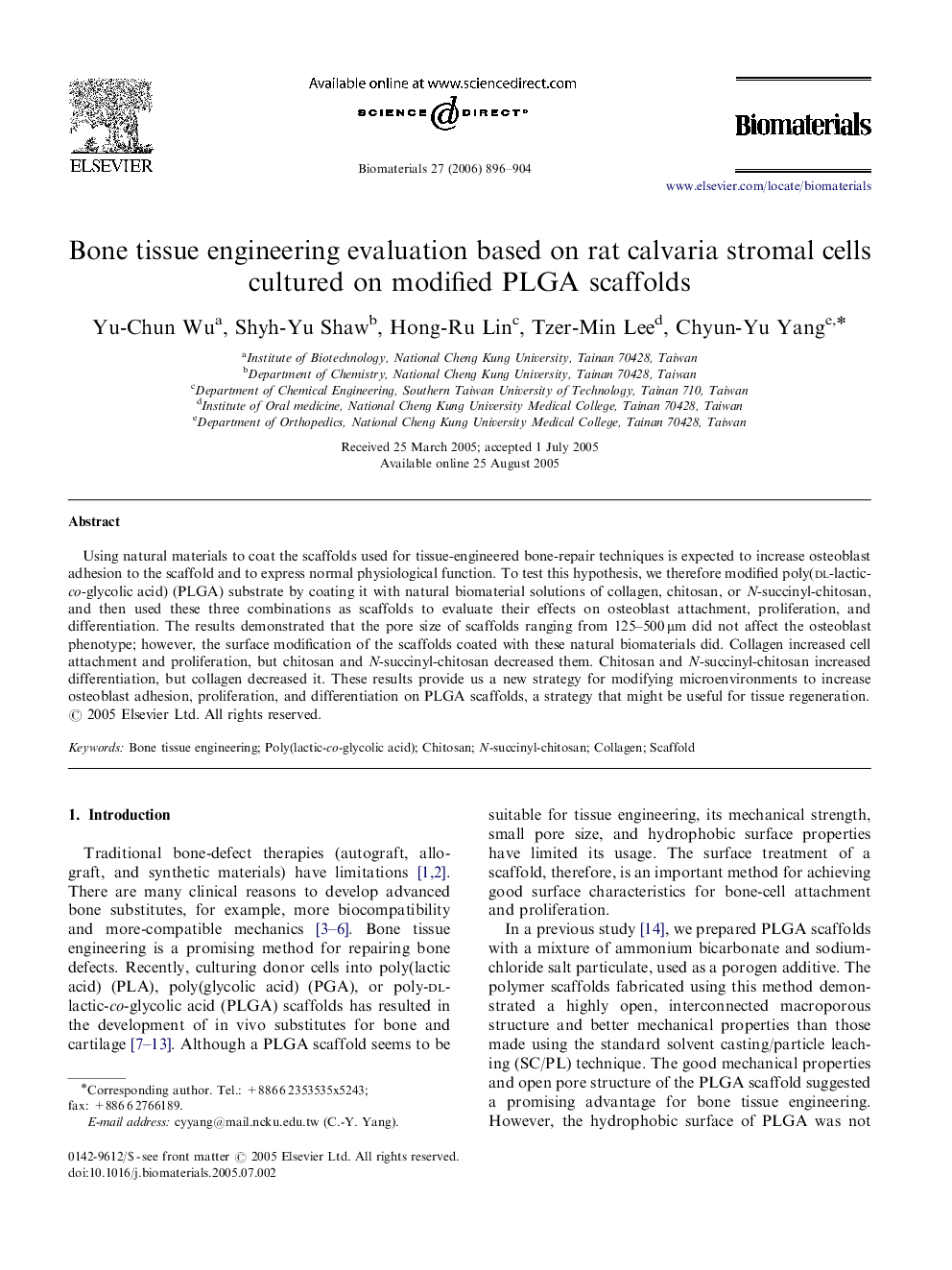| Article ID | Journal | Published Year | Pages | File Type |
|---|---|---|---|---|
| 11661 | Biomaterials | 2006 | 9 Pages |
Using natural materials to coat the scaffolds used for tissue-engineered bone-repair techniques is expected to increase osteoblast adhesion to the scaffold and to express normal physiological function. To test this hypothesis, we therefore modified poly(dl-lactic-co-glycolic acid) (PLGA) substrate by coating it with natural biomaterial solutions of collagen, chitosan, or N-succinyl-chitosan, and then used these three combinations as scaffolds to evaluate their effects on osteoblast attachment, proliferation, and differentiation. The results demonstrated that the pore size of scaffolds ranging from 125–500 μm did not affect the osteoblast phenotype; however, the surface modification of the scaffolds coated with these natural biomaterials did. Collagen increased cell attachment and proliferation, but chitosan and N-succinyl-chitosan decreased them. Chitosan and N-succinyl-chitosan increased differentiation, but collagen decreased it. These results provide us a new strategy for modifying microenvironments to increase osteoblast adhesion, proliferation, and differentiation on PLGA scaffolds, a strategy that might be useful for tissue regeneration.
